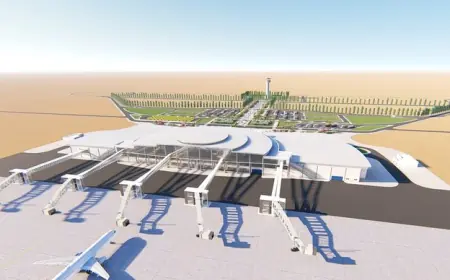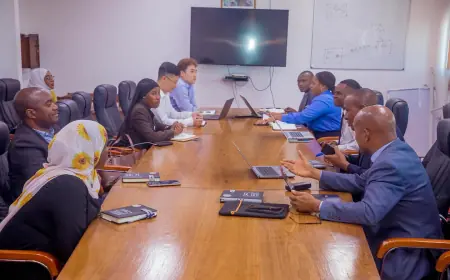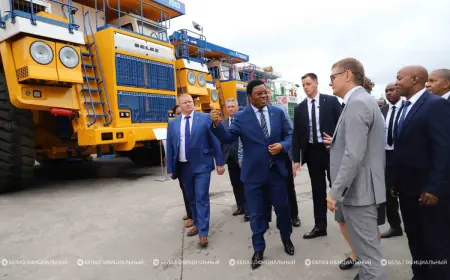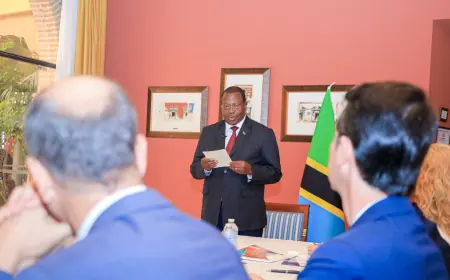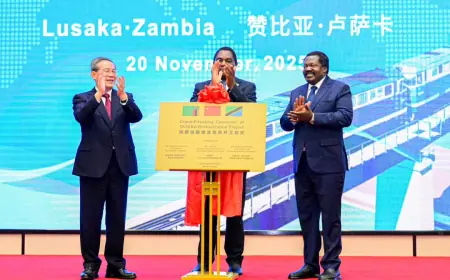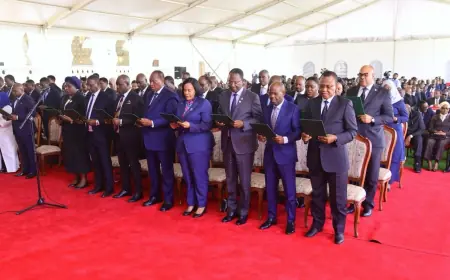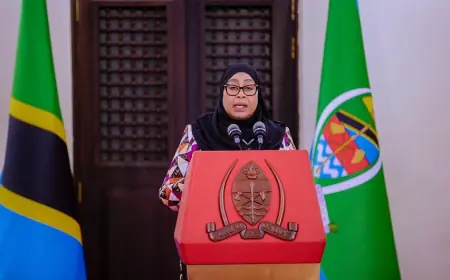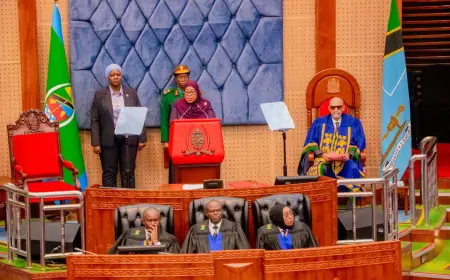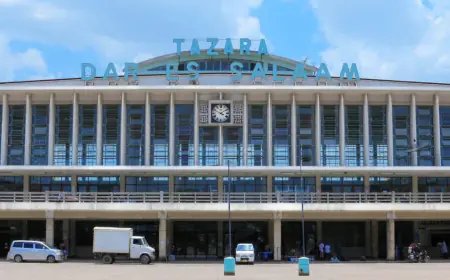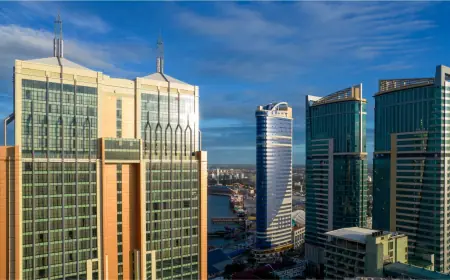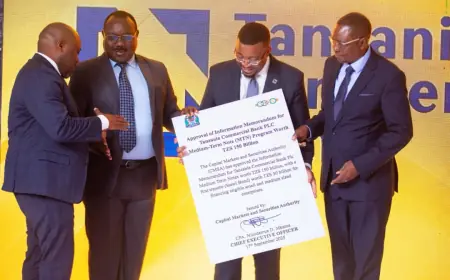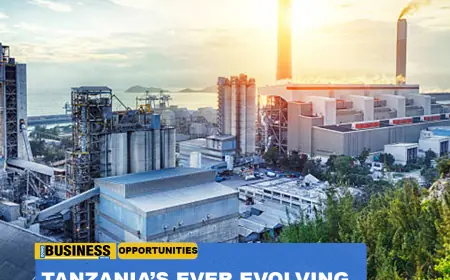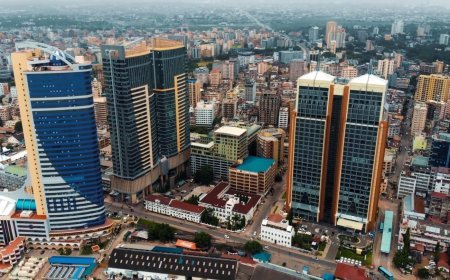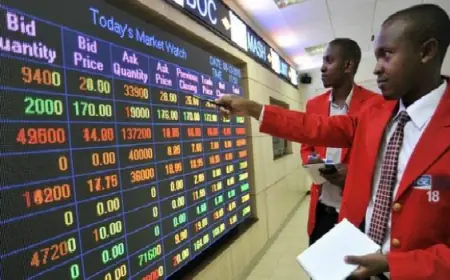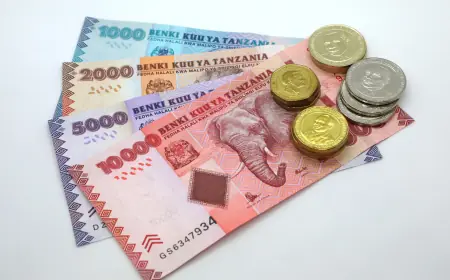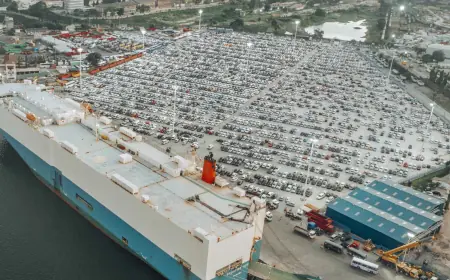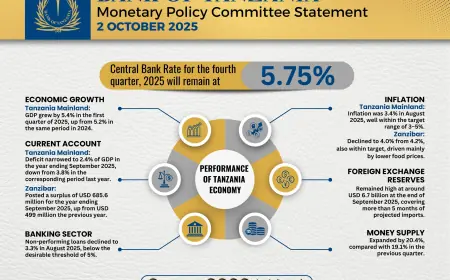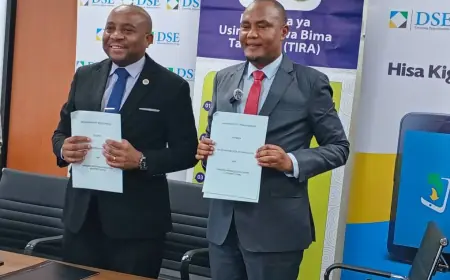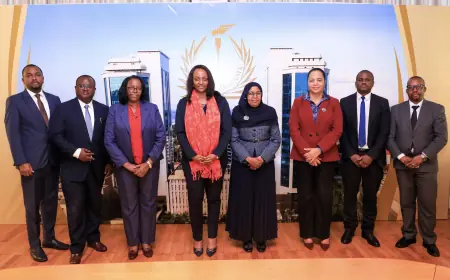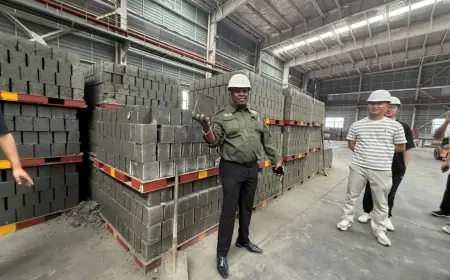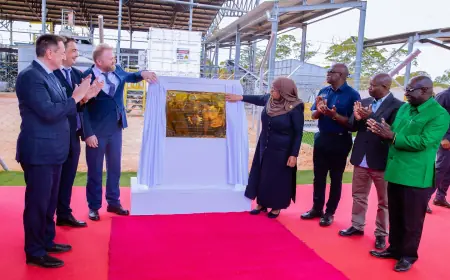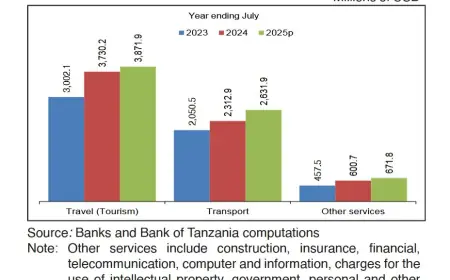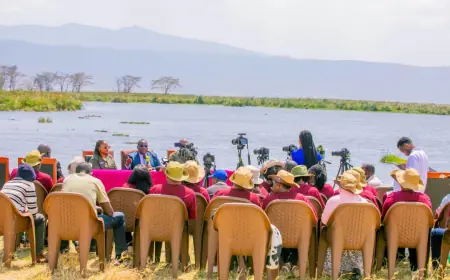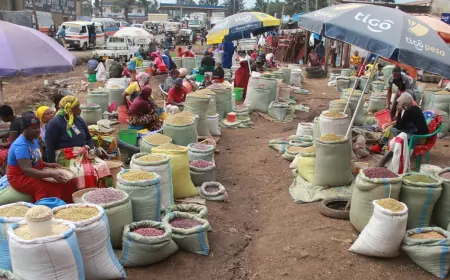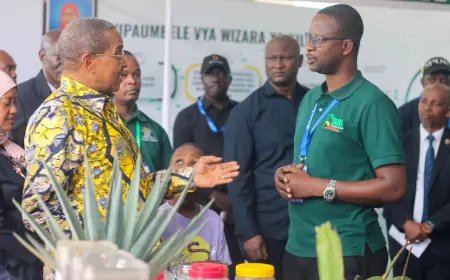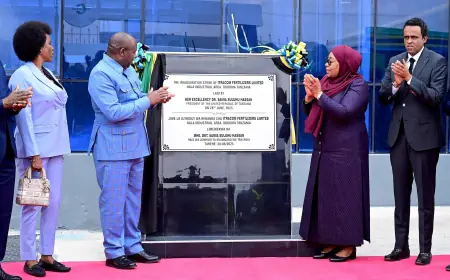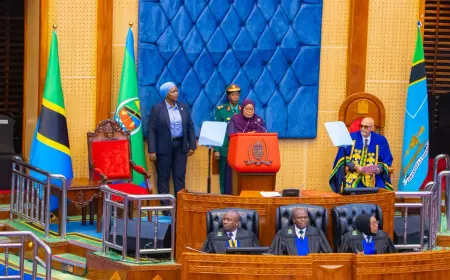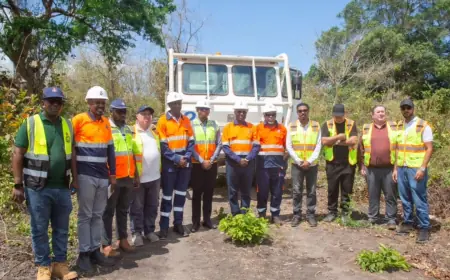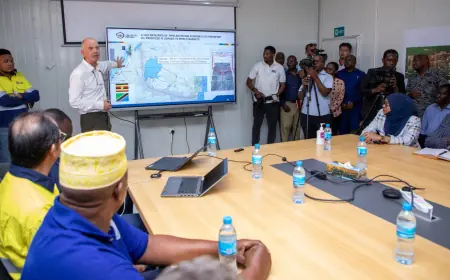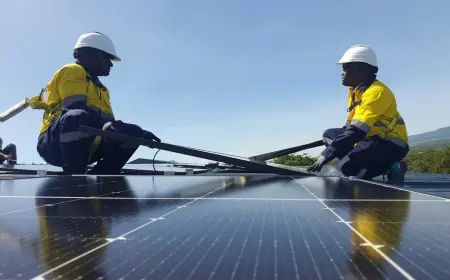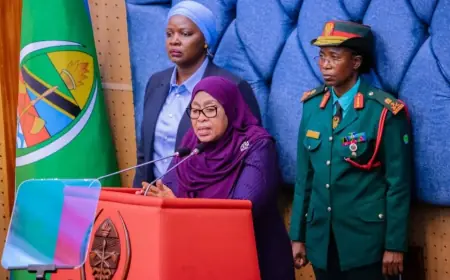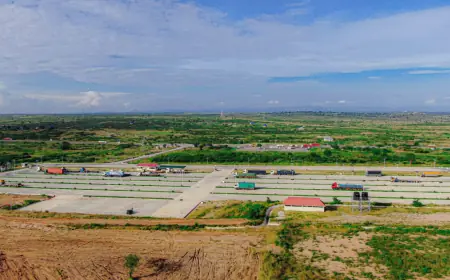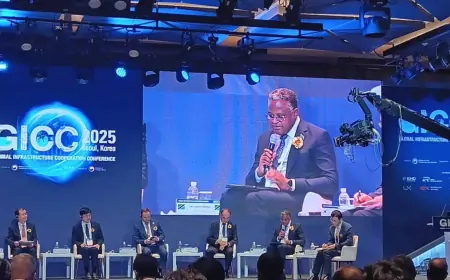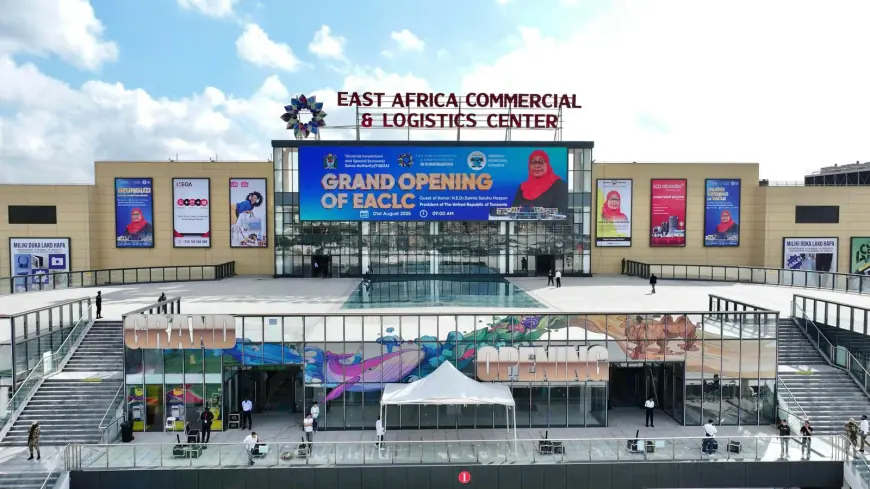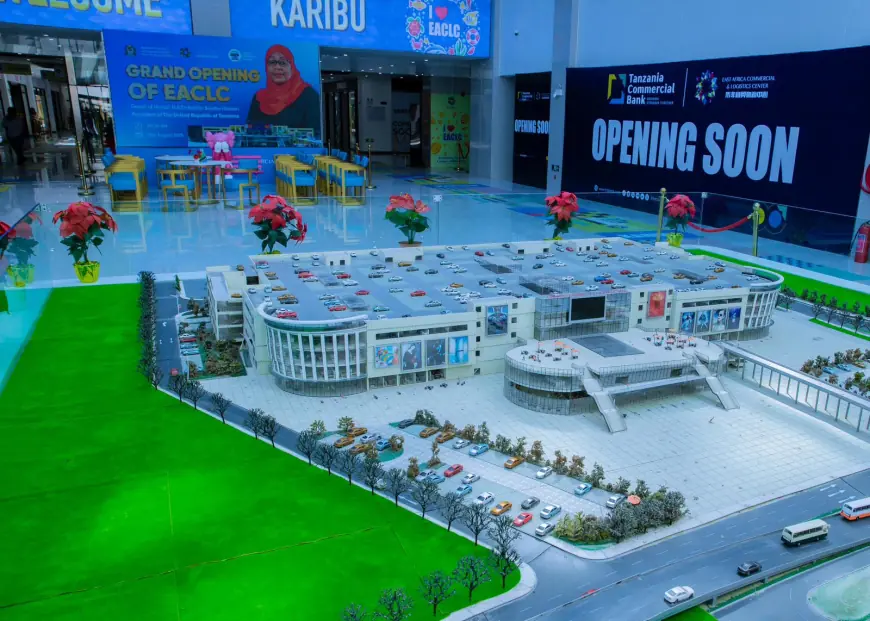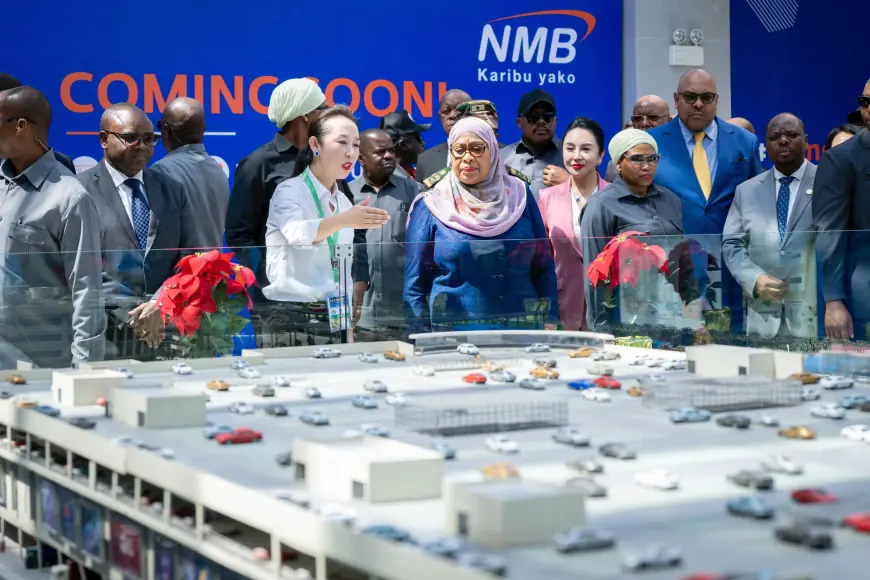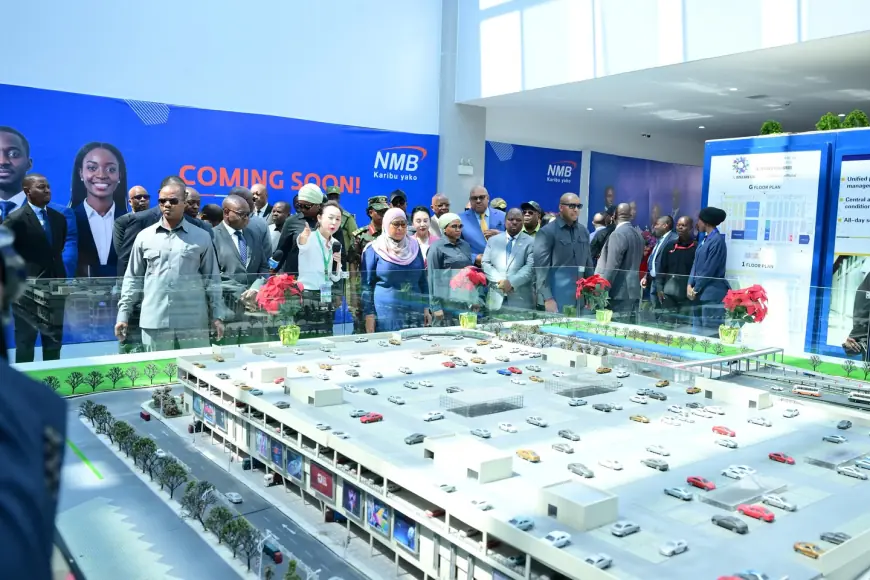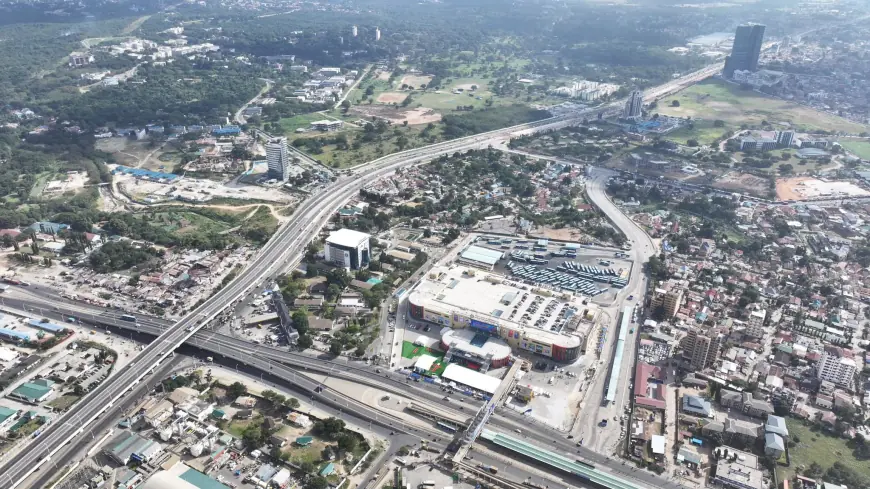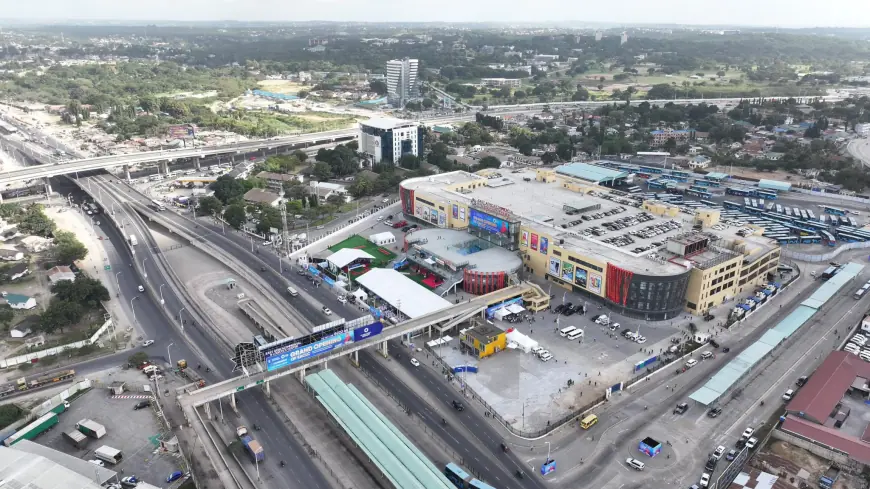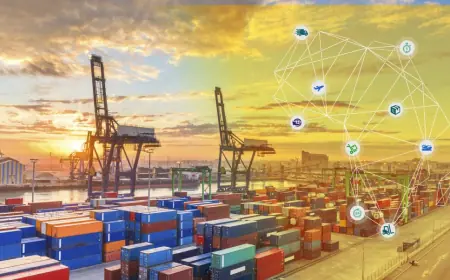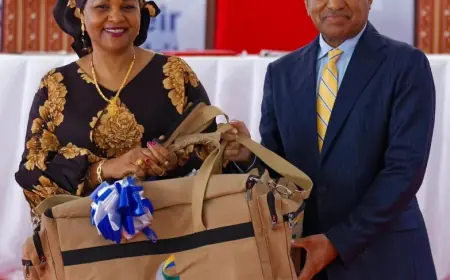Tanzania opens Chinese-backed trade hub as regional commercial ambitions grow
Situated in the bustling Ubungo district in Dar es Salaam the East African Commercial and Logistics Centre is Tanzania’s largest integrated trading facility to date
Dar es Salaam. Tanzania’s drive to consolidate its position as a strategic trade and logistics gateway in Eastern and Southern Africa received a significant boost yesterday with the official opening of the East African Commercial and Logistics Centre (EACLC) in Ubungo, Dar es Salaam.
Officiated by President Samia Suluhu Hassan, the facility, developed with Chinese investment, represents the largest integrated commercial hub in the country and is expected to play a pivotal role in strengthening Tanzania’s connectivity with regional and global markets.
Designed as a one-stop centre for wholesale trade, warehousing, logistics, exhibition services, and e-commerce platforms, the EACLC aims to streamline trade processes and reduce transaction costs for businesses operating within and beyond Tanzanian borders.
President Hassan described the launch as a major milestone in Tanzania’s broader commercial strategy.
“This centre is a manifestation of our vision to transform Tanzania into the commercial nerve centre of the region. We are laying the foundation not just for Tanzanian prosperity, but for regional economic integration and cooperation.” She said.
She added that the government’s ambition is to position Dar es Salaam as the most efficient entry and exit point for goods in the East African region, citing a reduction in customs clearance time at the Dar Port from seven to three days as a projected outcome of the centre’s operationalisation.
Integrated Commercial Ecosystem
Situated in the bustling Ubungo district in Dar es Salaam the East African Commercial and Logistics Centre is Tanzania’s largest integrated trading facility to date. It comprises 2,060 trade units, of which 65 percent are owned by Tanzanian nationals.
More than 400 businesses are already operating within the facility, which authorities hope will serve as a catalyst for industrial linkages, job creation, and increased tax revenues.
According to Mr Gilead Teri, Executive Director of the Tanzania Special Economic Zones Authority (TISEZA), the project generated over 2,000 jobs during its construction phase.
He projected that more than 15,000 direct and 50,000 indirect jobs would be created during the centre’s operational phase, alongside an annual revenue contribution of over Sh25 billion to the national exchequer.
Chairperson of EACLC Limited, Dr Lisa Wang Xiangyun, reiterated the project’s commitment to local empowerment.
“This investment is rooted in partnership. We are here to build with Tanzanians—to support, not supplant; to empower, not to displace,” she noted.
The EACLC’s business model reflects a broader government strategy to forge beneficial international partnerships while safeguarding local participation and value creation.
Tanzania’s Regional trade Aspirations
The opening of the EACLC comes at a time when Tanzania is seeking to revitalise its regional trade performance under the frameworks of the East African Community (EAC), Southern African Development Community (SADC), and the African Continental Free Trade Area (AfCFTA).
In 2024, the contribution of the trade sector to Tanzania’s Gross Domestic Product (GDP) reached 8.6 percent, up from 8.4 percent in 2023.
The sector grew at a rate of 4.8 percent in 2024 compared to 4.2 percent the previous year, buoyed by ongoing improvements in the country’s business environment.
However, Tanzania’s export performance within the EAC bloc recorded a slight decline, falling from $1.18 billion in 2023 to $1.16 billion in 2024, representing a 1.4 percent drop.
Conversely, imports from EAC partner states rose marginally by 0.7 percent to $527.3 million.
In the SADC region, Tanzania’s exports experienced a substantial increase, surging by 71.8 percent from $1.73 billion in 2023 to $2.97 billion in 2024.
This was largely driven by rising shipments of minerals, avocados, coffee, tobacco, cement, garments, soap, tiles, and cosmetics.
Under the AfCFTA, Tanzania’s trade with other African markets also expanded significantly. Exports to African countries reached $3.95 billion in 2024, up from $2.34 billion in 2023—an increase of 40 percent.
Key markets included Morocco, Nigeria, Ghana, Egypt, and Ethiopia, with leading exports comprising coffee, tobacco, cereals, glass products, spices, and sisal fibres.
On the import side, Tanzania registered a 4.04 percent decline in goods sourced from African countries, dropping to $1.37 billion in 2024 from $1.43 billion the previous year, mainly due to reduced imports of industrial sugar, pharmaceutical products, and gypsum-based plasters.
A Strategic Gateway for AfCFTA and Beyond
With trade dynamics across the continent shifting in response to AfCFTA-led liberalisation, infrastructure such as the EACLC is being positioned as crucial enablers of intra-African trade.
Analysts say the facility will facilitate greater product aggregation, reduce trade friction, and enhance Tanzania’s competitiveness.
By coupling strategic infrastructure with reforms in customs, licensing, and logistics, Tanzania seeks not only to enhance its domestic trade capacities but also to assume a larger role in regional value chains.
The EACLC is expected to complement other key government-led infrastructure projects, including the Standard Gauge Railway (SGR), the revitalisation of Dar es Salaam and Tanga ports, and the Kwala Dry Port in Coast Region, all aimed at anchoring Tanzania’s emergence as a transport and trade powerhouse.
As East Africa’s economies integrate further and Africa’s continental market opens up under the AfCFTA, Tanzania is placing itself at the crossroads of regional commerce—with the EACLC standing as one of its most visible and ambitious symbols.
What's Your Reaction?
 Like
0
Like
0
 Dislike
0
Dislike
0
 Love
0
Love
0
 Funny
0
Funny
0
 Angry
0
Angry
0
 Sad
0
Sad
0
 Wow
0
Wow
0
